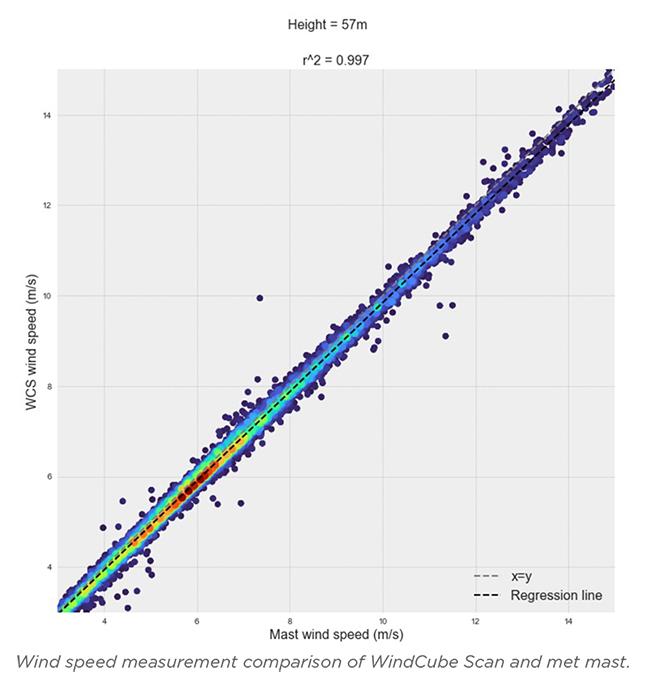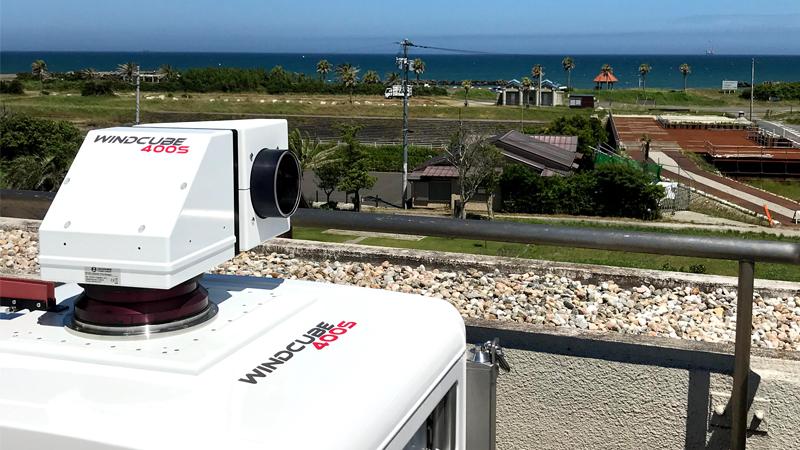Wind Resource Assessment offshore from the shore in Japan
How Green Power Investment leveraged WindCube Scan Dual Lidar to efficiently measure the full wind profile for a competitive new project
The client: Green Power Investment, a subsidiary of Pattern Energy Group
Vaisala provided: WindCube® Scan Dual Lidar
The goal: A winning bid for offshore development
Green Power Investment (GPI) has been a major contributor to wind energy development, construction and operation in Japan since their inception in 2004. Owner of the largest onshore wind farm in Japan—the 122 MW Tsugaru—GPI is increasing their focus on offshore project development. For offshore wind farm development, ClassNK (the testing, certification and technical advisory service provider in Japan) requires wind speed measurements covering the area where all future turbines will be located. GPI introduced WindCube Scan lidar to ClassNK during the wind farm certification process of the Ishikari Offshore Wind Farm. This was the first case when scanning lidar measurements were applied for wind farm certification in Japan.
Offshore wind energy is growing fast in Japan, where the country is targeting a total of 10 GW capacity by 2030. To meet this timeline, the Japanese government is using an auction process for developers to bid for wind development projects.
Wind Resource Assessment (WRA) timing and accurate wind measurements are critical as project developers bid against each other to supply energy through long-term contacts at the lowest price. With accurate wind resource data, GPI can prove the bankability of their project, successfully compete in the auction process, and seek financing.
GPI sought a scanning lidar that they could quickly deploy and collect accurate measurements for their proposed sites in Japan, where several prospective offshore projects with average distances from the shore of 2km to 10km are located. Not only did GPI need to measure how much wind speed increases from the coast to the offshore site, the onsite measurement data itself would also be critical for the project.
The solution: Reliable, accurate and cost efficient
GPI have extensive experience with WindCube lidar, and know that the advantages of lidar make it a clear winner over a met mast. Working with Vaisala and EKO Instruments (local Vaisala partner and service center), the organization selected the WindCube Scan Dual Lidar to execute their WRA campaign in an offshore-from-the- shore configuration.
WindCube Scan Dual Lidar gives GPI a full wind profile: With each lidar placed in a strategic location, the solution provides a comprehensive picture of the wind resource profiles by observing an offshore location from several positions. The result is several virtual met masts reconstructed using dual scanning lidar configuration.
Not only was Green Power able to setup the solution faster and more cost-effectively than a met mast, but the dual lidar configuration also gave them the ability to collect turbulence intensity measurements thanks to beam crossing and high sampling frequency of the lidars. Several studies in Japan and Europe have proven dual lidar can accurately measure wind speed and turbulence intensity in comparison with a met mast. GPI believes that dual scanning lidar is a key for accelerating offshore wind development and wind farm certification process in Japan.
"We can create site conditions for wind turbine design load using dual scanning lidar without an offshore met mast or floating lidar system," points out Atsushi Yoshimura, Manager at GPI.
The result: Dependable technology and support
WindCube Scan Dual Lidar is providing the accurate, reliable wind measurements that GPI needs to reduce measure uncertainty and to create a feasible project and competitive bid for the upcoming wind farm development auction, as well as reach Final Investment Decision (FID). Because of its unique configuration, the solution allows GPI to collect accurate data at 2-3 offshore locations and several heights, creating so-called “virtual met masts” over the measured area.

Kousuke Takahashi, Developer at GPI, adds: "Offshore wind development must be sensitive to the activities of local fisheries: the offshore-from-the-shore dual lidar setup allows GPI to conduct our WRA without disrupting fishery activities."
Working with Vaisala and EKO Instruments has helped GPI set up the WindCube Scan Dual Lidar quickly and efficiently to get the best possible results from the WRA campaign. "Vaisala’s and EKO’s expertise and understanding of the Japanese wind energy market has given GPI the confidence to apply dual lidar for future projects in Japan, as well as the consideration of nacelle-mounted lidar for Power Performance Testing and scanning lidar for wind forecasting," concludes Atsushi Yoshimura.
“WindCube Dual Lidar is a game changer: We can get the whole wind picture with scanning lidar. There are too many good values to describe scanning lidar, and I cannot find a better partner than Vaisala and EKO. Without their expertise, we would not be able to make this happen."
Atsushi Yoshimura, Manager
About EKO
Over 90 years of Japanese design, reliability & precision in solar energy sensors, environmental science, and material analysis. EKO Instruments are today deployed around the world, supporting environmental research and renewable energy projects through continuous innovation, industry- leading turn-key solutions, and an uncompromising commitment to quality. Find out more at eko-instruments.com.
